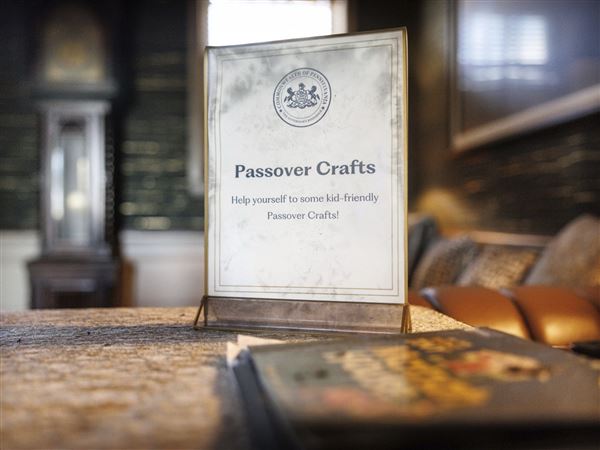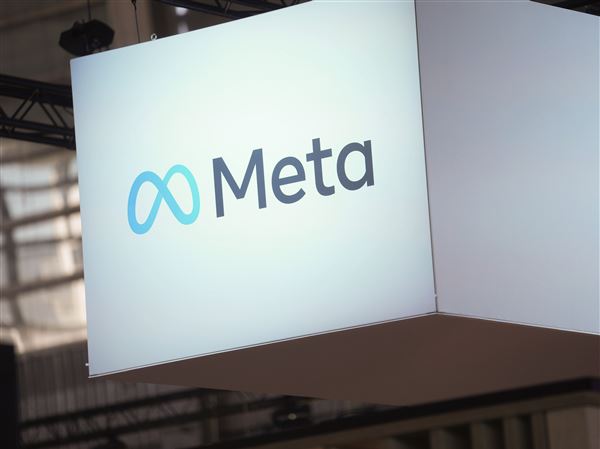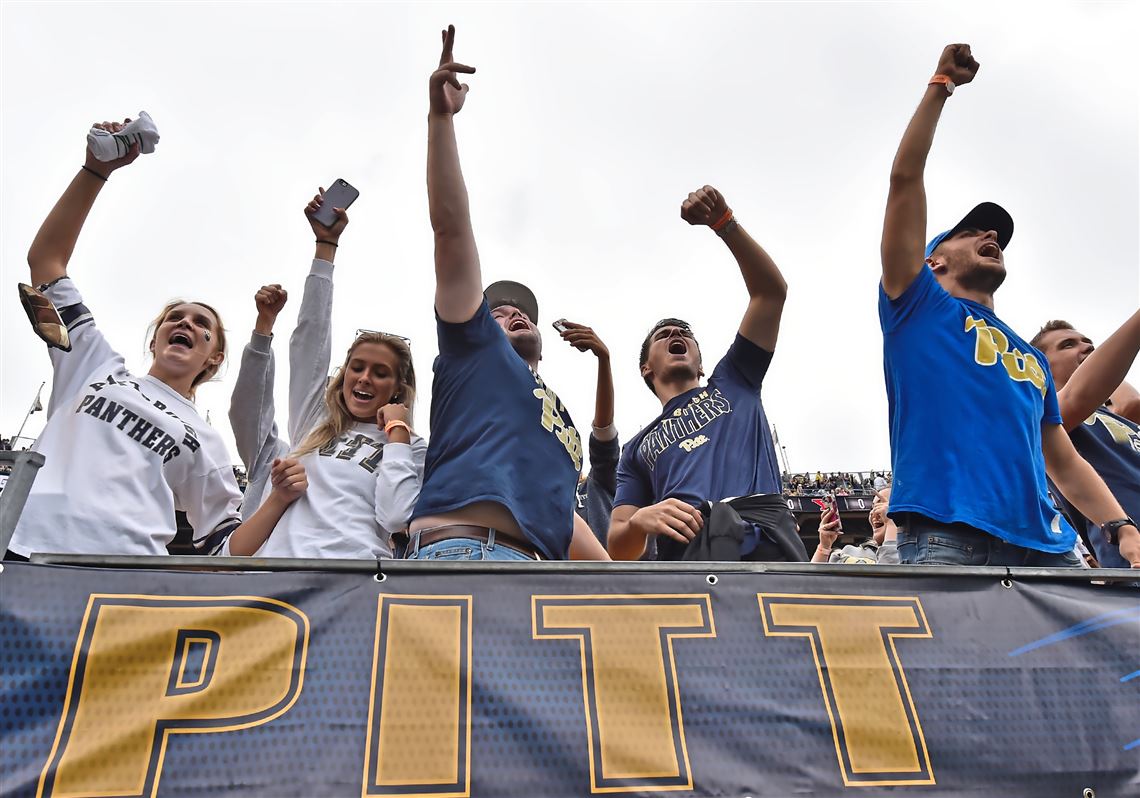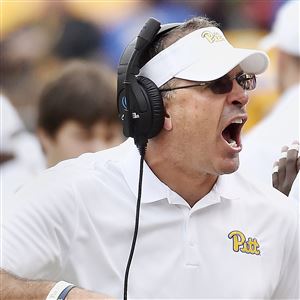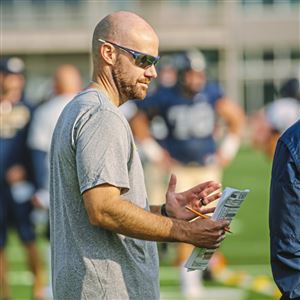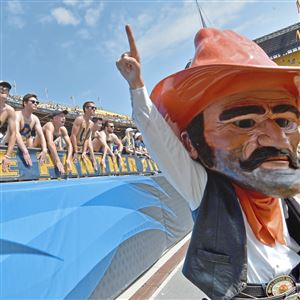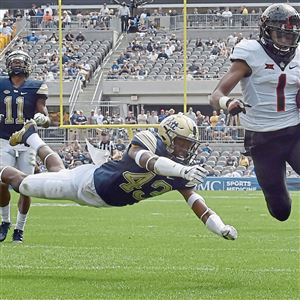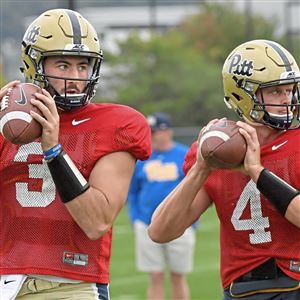As Oklahoma State’s 59-21 onslaught of Pitt waged on Saturday, ESPN cameras cut to shots of fans in the sparse Heinz Field crowd, many of whom were either asleep or visibly miserable. Those same cameras later showed a message on the stadium’s video board notifying students that if they stayed the whole game, they would receive a complimentary beverage.
For Pitt, though, there was a problem that existed well before the audience thinned to the point of becoming an internet meme. On a clear and sunny mid-September afternoon, actual attendance was lower for a game against a top-10 team (38,952) than two weeks earlier when the Panthers faced a Football Championship Subdivision opponent (40,012).
It’s a pair of numbers that can unearth any number of long-simmering topics — the state of the school’s football program, the need for an on-campus stadium — but it also presents questions about how Pitt approaches its non-conference scheduling. After all, if fewer people show up for a top-10 foe than an FCS team, would it make more sense to opt for the choice exponentially more likely to end with a win?
The question, while hypothetical, doesn’t register with Pitt coach Pat Narduzzi.
“We want to compete against the best,” he said Monday at his weekly press conference. “You all worry about wins and losses, but the only way you get better is to have good competition. I’m not going to sit here and say ‘Let’s go schedule somebody else.’ We want to play the best and our guys want to play the best. I’m not worried about the crowd; I’m worried about our players and what they’re doing on the field.”
Narduzzi’s argument has been backed up throughout his tenure and has in some ways defined it. The last two games notwithstanding, his teams often have fared well against daunting opponents and under bright lights, evidenced last year by wins against Penn State and Clemson.
For a school with an undergraduate enrollment smaller than 20,000, and one that has long struggled to fill a spacious venue in a pro-centric city, the football program and athletic department are presented with a chicken-or-the-egg predicament when it comes to scheduling. Does it build momentum by overloading its non-conference schedule with beatable teams to inflate its record and generate interest? Or does it try to lure fans with the draw of top programs regularly visiting Heinz Field?
Over the past 10 years, the non-conference home attendance figures have been better when there is at least one major-conference opponent on the schedule. There is, however, some variance.
2016: 55,126 (Villanova, Penn State, Marshall)
2015: 59,184 (Youngstown State, Notre Dame)
2014: 43,168 (Delaware, Iowa, Akron)
2013: 39,356 (New Mexico, Old Dominion)
2012: 41,774 (Youngstown State, Virginia Tech, Gardner-Webb)
2011: 49,590 (Maine, Buffalo, Utah, Notre Dame)
2010: 51,148 (Florida International, Miami, New Hampshire)
2009: 56,312 (Notre Dame, Navy, Youngstown State)
2008: 45,960 (Bowling Green, Buffalo, Iowa)
2007: 32,379 (Eastern Michigan, Grambling, Navy)
Two of the three years in which Pitt didn’t play a single Power Five opponent in that span, 2007 and 2013, were its two least-attended in the non-conference portion of its schedule.
Those numbers are also an indication that not all big-name opponents are created equally.
In 2012, the year with the third-worst attendance on that list, only 48,032 people saw Pitt beat No. 13 Virginia Tech, and in 2008, an undefeated Iowa team drew just 5,000 more spectators (50,321) than Bowling Green did three weeks earlier (45,063). Conversely, many of the seasons in which Heinz Field was at its fullest during out-of-conference play were years when traditional rivals such as Penn State or national brands like Notre Dame visited the North Shore. So, while Oklahoma State is a top-10 team with a burgeoning Heisman trophy contender at quarterback, it doesn’t necessarily have the historical cache or regional ties that typically fill seats.
Coaches customarily have a degree of control over scheduling, and with four non-ACC games at their disposal, Pitt has the opportunity to be flexible and creative with its plans.
In the next seven years, it will play host to foes as high profile as Penn State (2018), Tennessee (2022) and West Virginia (2022, 2024). Though that same time frame also includes the usual array of lower-level opponents, Tennessee and West Virginia were both announced following Narduzzi’s arrival in 2014, an indication he prefers a more challenging non-conference slate.
As he goes about that work, the impact those teams have on attendance isn’t a concern.
“I’m worried about putting the best product I can on the field,” Narduzzi said. “That’s all I can worry about. There’s not enough time for me to worry about that that looks like. I don’t even know. I don’t even see it.”
Craig Meyer: cmeyer@post-gazette.com and Twitter @CraigMeyerPG
First Published: September 19, 2017, 8:50 p.m.



